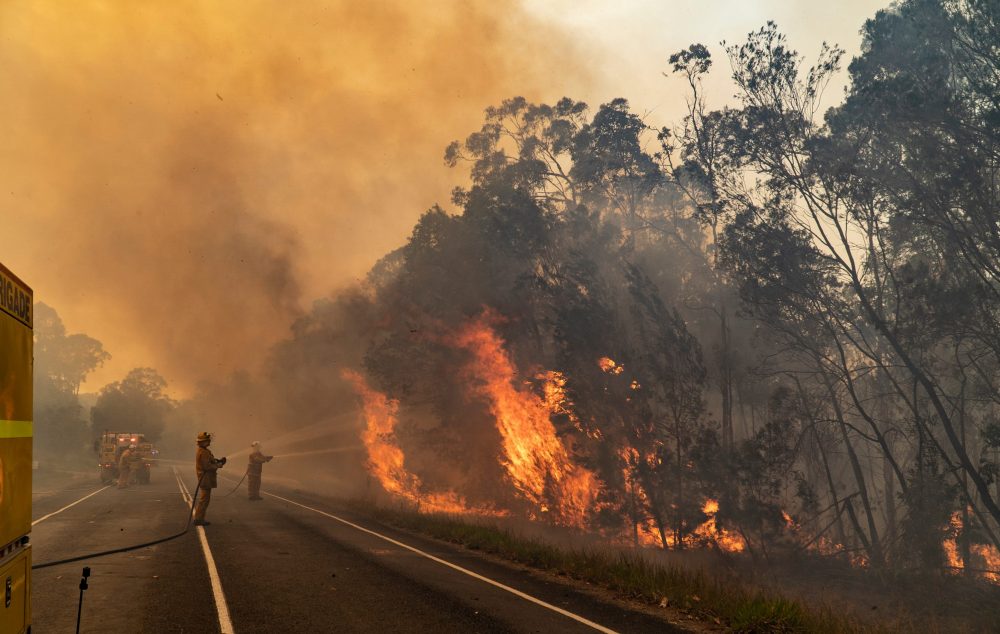From Analysis to Activity: Using Your BAL Report to Alleviate Bushfire Ris
From Analysis to Activity: Using Your BAL Report to Alleviate Bushfire Ris
Blog Article
Ensuring Bush Fire Defense Through Appropriate BAL Record Evaluation
In the world of bush fire security, the thorough analysis of Bushfire Assault Degree (BAL) reports stands as a keystone for securing properties against the devastating effect of wildfires. With ecological elements and building characteristics playing significant functions in identifying the degree of risk, a detailed understanding of BAL ratings ends up being important.
Recognizing Bushfire Attack Degree (BAL)
In the realm of bushfire protection, comprehending the Bushfire Assault Degree (BAL) is critical for ensuring effective mitigation techniques. BAL is a system utilized to gauge the possible risk a building may face from a bushfire. It thinks about aspects such as the kind of greenery, the slope of the land, the Fire Risk Index, and the Fire Intensity Index. Recognizing the BAL ranking of a residential property is critical for home builders, policymakers, and owners to implement appropriate actions to safeguard versus bushfire hazards.

Significance of BAL Report Analysis
An important aspect in bushfire protection preparation entails the thorough analysis of BAL records to analyze the possible dangers and figure out suitable mitigation strategies. BAL reports provide crucial details concerning the possible effect of bushfires on a home based on numerous aspects such as plants type, range to prospective fire risks, and slope of the land. Analyzing these records with precision is paramount in creating efficient bushfire protection measures customized to the certain risk account of a building.
Carrying Out Fire Defense Procedures
Implementing efficient fire protection actions is vital for protecting homes in bushfire-prone locations. One of the key ways to improve fire protection is by producing defensible space around buildings. This entails cleaning combustible greenery, such as dry fallen leaves and branches, within a particular span of the residential property. Additionally, setting up fireproof roofing products can help in reducing the risk of coal firing up the roofing throughout a bushfire. Correctly kept displays and seamless gutters are likewise necessary to stop particles build-up that could fuel a fire.
Additionally, having a well-kept and sufficient water supply, such as a container or swimming pool, can assist firefighters in their initiatives to safeguard the home. BAL Report. Overall, carrying out a combination of these fire security measures can substantially enhance the opportunities of protecting properties during bushfire occasions.
Mitigating Risks in Fire-Prone Locations
To fortify residential properties against bushfire dangers, a tactical emphasis on mitigating risks in fire-prone areas is vital. Mitigating dangers in fire-prone areas includes a thorough method that incorporates various procedures to lower the possibility and effect of bushfires. One crucial element of danger reduction is preserving defensible area around residential or commercial properties by removing combustible vegetation, guaranteeing ample spacing in between trees and structures, and using fireproof landscape design techniques. Additionally, executing ember-proofing procedures such as mounting steel mesh displays on home windows and covering roof cavities can assist stop coal attacks and reduce the danger resource of area fires.
In addition, creating or retrofitting structures with fire-resistant materials and guaranteeing proper upkeep of roofings, rain gutters, and external cladding can significantly enhance the home's resilience to bushfires. Practicing a bushfire and creating emergency plan with all owners, including discharge treatments and communication strategies, is additionally crucial in mitigating risks properly. By embracing a proactive strategy to run the risk of reduction in fire-prone areas, homeowner can better secure their assets and boost overall bushfire readiness.
Ensuring Home Safety And Security and Durability
Ensuring the security and resilience of residential properties in fire-prone areas calls for a steadfast dedication to robust preventative measures and critical planning. Residential property safety starts with implementing efficient steps to lower fire risks. This consists of maintaining a defensible area around the building by clearing combustible vegetation, making sure proper upkeep of roofing systems and rain gutters, and using fireproof structure materials. Routine maintenance of click reference firefighting devices, such as tubes and lawn sprinkler, is likewise crucial to residential property resilience.
Strength, on the various other hand, involves the capacity of a residential or commercial property to recoup and hold up against from a bushfire. This can be boosted via the installation of ember guards on vents and home windows, making certain that access factors for coal are decreased. Additionally, having a well-balanced evacuation plan and practicing it on a regular basis can considerably boost building strength. Collaborating with next-door neighbors and neighborhood fire authorities can likewise bolster the safety and security and resilience of residential properties in fire-prone locations. By proactively resolving these facets, homeowner can much better safeguard their assets and enjoyed ones from the risk of bushfires.
Verdict
Finally, making sure bushfire protection with correct BAL report analysis is crucial for recognizing the degree of risk presented by bushfires and implementing required fire defense measures. By reducing threats in fire-prone locations and guaranteeing building safety and resilience, communities and people can much better plan for and react to bushfire events. It is critical to prioritize fire safety procedures to secure lives and property in these high-risk atmospheres.
In the world of bush fire security, the careful evaluation of Bushfire Strike Level (BAL) records stands as a keystone for safeguarding residential properties versus the devastating influence of wildfires (BAL Report). Understanding the BAL rating of Read Full Report a residential or commercial property is important for residential property policymakers, home builders, and owners to execute suitable measures to guard versus bushfire hazards

BAL reports offer vital details about the potential effect of bushfires on a building based on various elements such as plants kind, range to potential fire hazards, and slope of the land (BAL Report). In general, carrying out a combination of these fire defense procedures can considerably increase the opportunities of protecting residential or commercial properties throughout bushfire occasions
Report this page